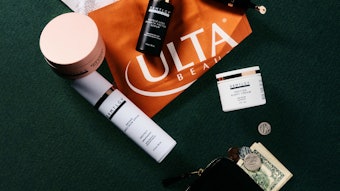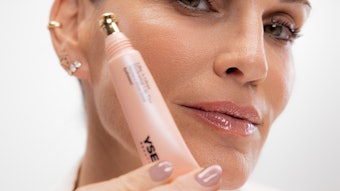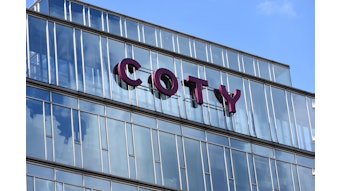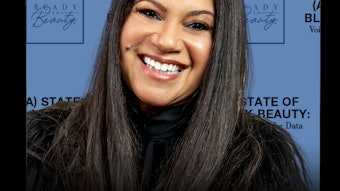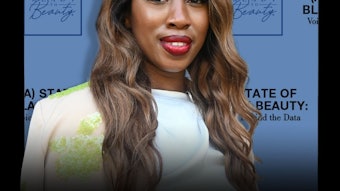- It’s easy to get caught in the rush when building a new brand, but having key strategy points can help anchor brands for a better chance at success.
- Smart business matters in strong brand building, so pay close attention to finances, ownership/rights, prioritization and execution, consumer engagement, building off failed ideas, and networking to create a stable, solid base that can help you build toward real success.
The beauty business is unique in many ways. There are brands that run the gamut from highly technical to unremittingly natural and everything in between. There also are beauty entrepreneurs entering the market space with radically different backgrounds, experience and viewpoints on what will lead to success. However, for any beauty brand, there are six proven habits that are nearly foolproof in helping ensure you are creating the strongest, most successful company possible.
We all know highly successful brands don’t just happen by chance. They exist because the creative brains behind the scenes think and act differently from everyone else—they have a “beauty brilliance” that helps ensure their success with consumers, with retailers and with their own teams. The essence of that brilliance is fueled by a core belief system that can, and will, give you a distinctive advantage against your competition.
1. Money Matters
Successful beauty brands know that true financial success can come down to pennies.
Like all new things (homes, cars, shoes and so on), it’s so easy when beginning a new brand to overspend straight away on things that are not necessarily critical for a successful launch. You will probably be tempted to part with some of your seed money (or maybe even your own dollars) on the exciting, sexy brand elements and tools that are so much fun to plan for and buy but that are not imperative when just starting out.
Beauty businesses are made and broken by pennies, and it’s the truly successful ones who adopt a tough stance on the bottom line right from the start. Elements such as URLs, trademarks and ownership of product formulas are definitely key assets that are going to require an initial investment, and must be in place before your brand can be commercialized. However, items such as tissue paper and gift boxes, branded mugs or consumer giveaways, while also important, can (and should) be planned for much later in the launch process.
2. Ownership Matters
Successful beauty brands know that ownership of product formulas matters. And speaking of ownership, now’s a good time to ask, “Who owns your formulas?” You’d better know the answer up front, or a few years down the road you could find yourself facing a touchy situation where the formulator doesn’t want to give up ownership yet you are ready to take control.
Who will ultimately own your product formulations can be established in different ways. It can be decided up front, it can be scheduled, with the brand gaining a vested percentage of ownership each year, or it can be through a completely unique agreement that you strike with your lab. Whatever method you choose, it needs to be decided straightaway and before you’ve even so much as started imagining primary components or writing packaging copy. Your formulas are one of your brand’s most prized assets—make this asset work for you and not someone else.
3. Engagement Matters
Successful beauty brands know that really good consumer engagement is necessary to thrive.
Keeping up with what compels and inspires consumers is a full-time job, and savvy beauty brands are those that recognize that understanding the pulse of strategic consumer engagement is the key to long-term brand success. By now, a robust social media presence should be a given, but even with the power of social media, it’s becoming imperative to think even bigger than social media.
What other ways can a new brand engage and enrapture consumers? Perhaps you want to wrap your logo around metro trains in all major cities or host an extreme sampling campaign with a TV affiliate that has local stations around the country.
Gaining even tiny advantages through a series of well-planned and executed consumer events can have a cumulative effect on your brand’s future success, as well as create pivotal consumer communication inroads that will continue to benefit the brand exponentially over time. Be the brand that consumers say, “I remember that brand! They covered Times Square with sample packets!” instead of, “Do you remember that brand? I think they gave something away.”
4. Execution Matters
Successful brands know that doing a few things well is far more critical than doing a lot of things poorly.
We all know what happens to the brand built on a house of cards—it falls, whereas a brand that executes a rather ordinary idea exceptionally well is far more likely to flourish. The key to creating a winning beauty brand that is achievable, relevant to consumers and covetable by everyone—industry insiders included—is knowing that quantity still doesn’t trump quality.
Quite often, the best idea for a new brand may really be quite small in scale. Perhaps your initial portfolio will be no more than a handful of products, or maybe even just one. GlamGlow took the beauty world by storm in 2012 with one SKU, and now it is an industry darling that beauty editors love and every store wants to distribute—and the brand still keeps its total family of products well under 10 SKUs.
Whatever plans you are executing, do them thoughtfully, thoroughly and well, and resist the impulse to execute on a lot of sort-of good ideas that you think will wow consumers. Sort-of good ideas have no longevity, and just like waterproof mascara, when it comes to ideas, its performance that counts.
5. Persistence Matters
Successful brands know that setbacks can be the gateway to future success. Often, when first creating a new beauty brand, any sort of setback can seem like an insurmountable hurdle. Visions of perfect formulations, effortless retailer deals and an immediate consumer love connections glaze every CEO’s eyes, but like the proverbial glass slipper, this scenario rarely plays out. Instead, it’s very common to take two large steps forward followed by several frustratingly small steps backward as you iron out wrinkles and issues with, for example, texture, scent and stability—or realize the shade of celadon green you picked for your logo prints out just a shade too dark for your true brand vision.
While these challenges can be incredibly frustrating, they are part of the process, and they can truly help enhance and strengthen your ideas in ways you maybe didn’t envision. I’ve always suspected that the most successful beauty brands are probably also the ones that have suffered the most failures. Maybe their formulas failed to produce results or their products just flat-out bombed with consumers—whatever the setback, these brands didn’t stop innovating and moving forward because their rare, precious plant extract proved to be more ho-hum with consumers. Instead, they use these failures as sounding boards and launch pads for their next great idea—which is always on deck.
6. Who You Know Matters
Successful brands know that in order to really establish themselves as a brand to watch, it’s still all about who you know.
As a newbie just starting to compete against marquee brands that have spent the past 10, 20 or 30 years or longer carving out appreciable market share, trying to launch a new product, let alone an entire brand, is a pretty big undertaking.
To really get your new brand started off right, you need to treat the process like you are looking for a job. Call in those favors, network with industry insiders and decision makers, revisit colleagues and former employers. Talk to anyone and everyone you know working in the beauty industry today—from CEOs to marketing directors to buyers to editorial assistants to bloggers—about your ideas and see what they say. Aside from just offering moral support, these contacts will provide a layer of knowledge and exposure that can greatly impact your brand’s success on down the line.
A willingness and desire to jump in the game and ask for advice, help, guidance or even brutal feedback may make the difference between creating an idea that could be good and creating a truly good idea. Just as a greenhouse helps delicate flowers grow, a well-maintained and nurtured network of contacts is the perfect environment to help take your idea from merely interesting to downright unbeatable.
True Success
True success is predicated on being willing to take risks and pursue what may seem like crazy ideas, and highly successful entrepreneurs and business owners are noted for having very similar beliefs and habits about how to make this process pay off. The same can be said for very successful beauty brands. Within this ultra-competitive industry, it pays to build your brand with lots of creativity, fun and style, as well as with proven strategies that lead to real success both now and in the future.
Alisa Marie Beyer is the founder and creative director of The Beauty Company (TBC), a global beauty consulting firm offering business, strategy, consumer intelligence and branding. Serving its clients at every stage of development (from start-ups to 13 of the top 15 global beauty companies), TBC intimately understands the industry, the consumer and the market, and becomes an integral part of each client or project team. [email protected]; thebeautycompany.co

